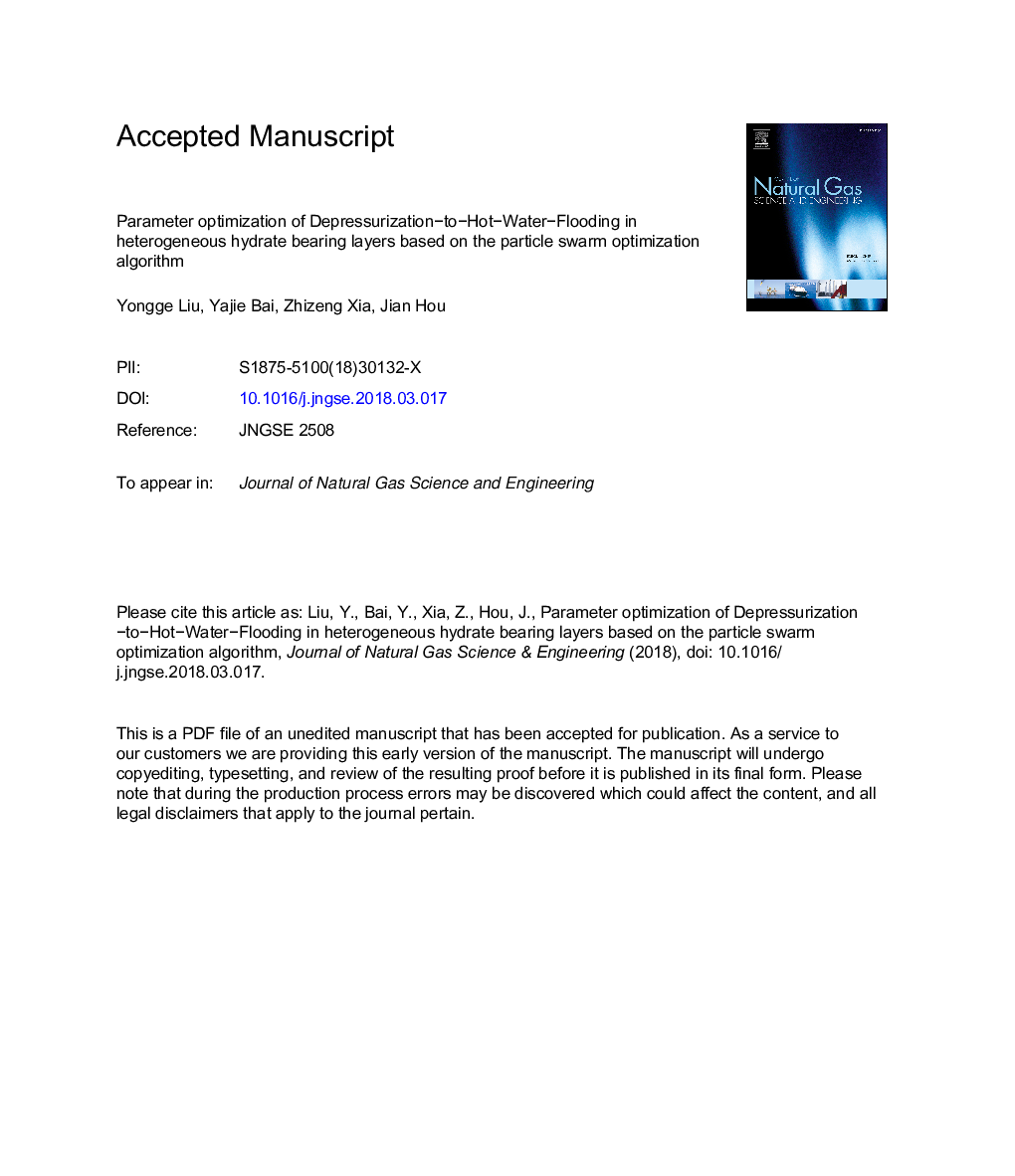| کد مقاله | کد نشریه | سال انتشار | مقاله انگلیسی | نسخه تمام متن |
|---|---|---|---|---|
| 8128202 | 1522990 | 2018 | 79 صفحه PDF | دانلود رایگان |
عنوان انگلیسی مقاله ISI
Parameter optimization of DepressurizationâtoâHotâWaterâFlooding in heterogeneous hydrate bearing layers based on the particle swarm optimization algorithm
دانلود مقاله + سفارش ترجمه
دانلود مقاله ISI انگلیسی
رایگان برای ایرانیان
موضوعات مرتبط
مهندسی و علوم پایه
علوم زمین و سیارات
علوم زمین و سیاره ای (عمومی)
پیش نمایش صفحه اول مقاله

چکیده انگلیسی
Given the great importance of optimization parameters to the development performance of hydrate bearing layers (HBLs), this study developed an operation parameter optimization method by combining the particle swarm optimization (PSO) algorithm and the numerical simulator HydrateResSim (HRS), and then built a heterogeneous HBL model according to common geological parameters of HBLs. Comprehensively considering the economy in the early development stage and the final recovery of methane, the depressurizationâtoâhotâwaterâflooding exploitation method was applied in this model, and the critical gas production rate (the gas production rate corresponding to the conversion from depressurization to hot water flooding), injected water temperature, injection/production ratio and injection rate of each injection well were optimized via the proposed optimization method. Results showed that the developed optimization method could effectively improve the development performance of the heterogeneous HBL. The energy efficiency and methane recovery of the optimal case surpassed those of the initial case by 44% and 15.9%, respectively. The optimal injection/production ratio was 0.82, and the optimal injected water temperature was 83â¯Â°C. Initiating hot water flooding when the gas production rate declined to 30% of the peak value was preferred for the optimal development performance. Larger HBL thicknesses are helpful to obtain higher gas production rates for the production wells in both depressurization and hot water flooding stages due to the corresponding higher NGH reserves. Higher permeability leads to more gas production in the depressurization stage due to the corresponding higher reservoir conductivity, but less gas production in the hot water flooding stage due to the lower remaining NGH reserves and bottom water coning.
ناشر
Database: Elsevier - ScienceDirect (ساینس دایرکت)
Journal: Journal of Natural Gas Science and Engineering - Volume 53, May 2018, Pages 403-415
Journal: Journal of Natural Gas Science and Engineering - Volume 53, May 2018, Pages 403-415
نویسندگان
Yongge Liu, Yajie Bai, Zhizeng Xia, Jian Hou,